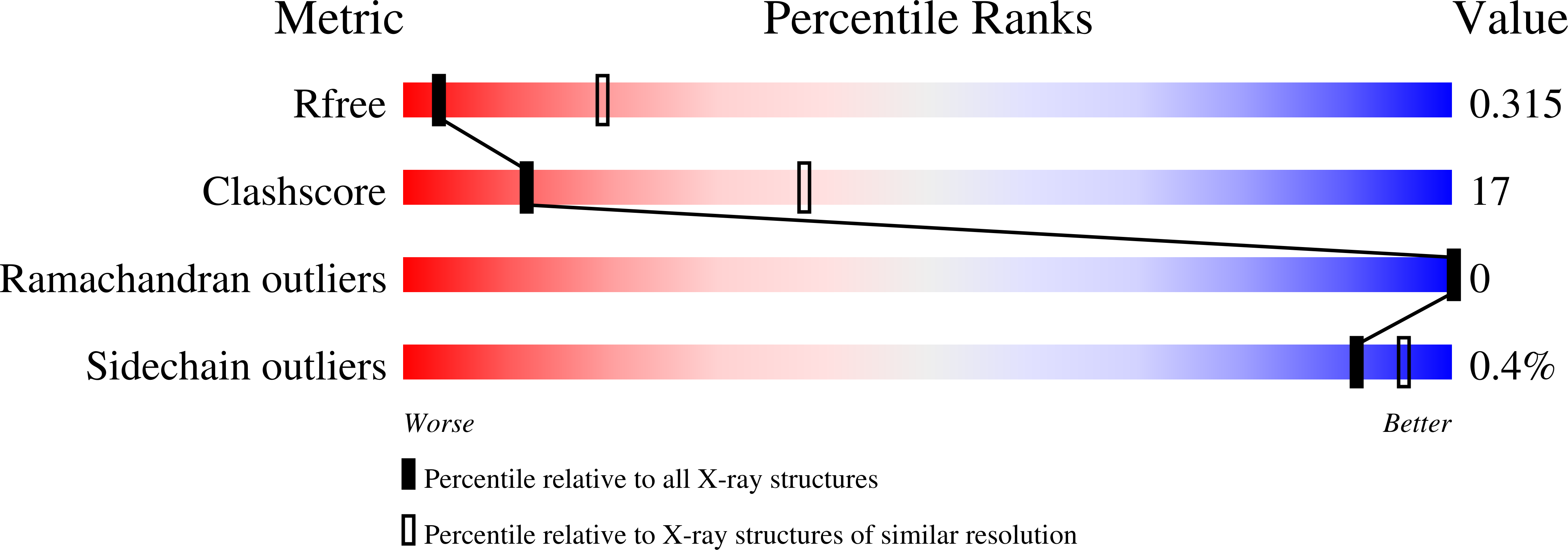Structural basis for Clostridium perfringens enterotoxin targeting of claudins at tight junctions in mammalian gut.
Vecchio, A.J., Rathnayake, S.S., Stroud, R.M.(2021) Proc Natl Acad Sci U S A 118
- PubMed: 33876770
- DOI: https://doi.org/10.1073/pnas.2024651118
- Primary Citation of Related Structures:
7KP4 - PubMed Abstract:
The bacterium Clostridium perfringens causes severe, sometimes lethal gastrointestinal disorders in humans, including enteritis and enterotoxemia. Type F strains produce an enterotoxin (CpE) that causes the third most common foodborne illness in the United States. CpE induces gut breakdown by disrupting barriers at cell-cell contacts called tight junctions (TJs), which are formed and maintained by claudins. Targeted binding of CpE to specific claudins, encoded by its C-terminal domain (cCpE), loosens TJ barriers to trigger molecular leaks between cells. Cytotoxicity results from claudin-bound CpE complexes forming pores in cell membranes. In mammalian tissues, ∼24 claudins govern TJ barriers-but the basis for CpE's selective targeting of claudins in the gut was undetermined. We report the structure of human claudin-4 in complex with cCpE, which reveals that enterotoxin targets a motif conserved in receptive claudins and how the motif imparts high-affinity CpE binding to these but not other subtypes. The structural basis of CpE targeting is supported by binding affinities, kinetics, and half-lives of claudin-enterotoxin complexes and by the cytotoxic effects of CpE on claudin-expressing cells. By correlating the binding residence times of claudin-CpE complexes we determined to claudin expression patterns in the gut, we uncover that the primary CpE receptors differ in mice and humans due to sequence changes in the target motif. These findings provide the molecular and structural element CpE employs for subtype-specific targeting of claudins during pathogenicity of C. perfringens in the gut and a framework for new strategies to treat CpE-based illnesses in domesticated mammals and humans.
Organizational Affiliation:
Department of Biochemistry, University of Nebraska-Lincoln, Lincoln, NE 68588; avecchio@unl.edu stroud@msg.ucsf.edu.



















